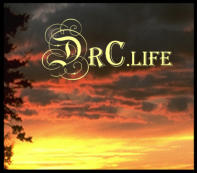
Wednesday 05 | 24| 2017
Who Do You Think You Are? - Part 1
Moving to a new home on new land brings a new set of experiences almost every day. Wake up in the morning and the bedroom is unfamiliar. The refrigerator in no longer in the same location. There are all new sounds, those creaks and groans a home makes in the middle of the night as you are falling off to sleep. The familiar of the old home is gone and with it the anchor of comfort. We are set adrift between the process of “out with the old, in with the new ”. This loss of the familiar and not yet connected to the crisp freshness of the new happens in many of life’s transitions: leaving an old job for a new one, getting married, and even replacing the loss of a pet with a new one. This feeling of being lost between the familiar that is gone and the unfamiliar that is yet to come is often experienced that first day you walk into a new school. Homelessness is so devastating it can bring on a psychotic break, and the opposite also – finding a place that once can call home, call a sanctuary, can be healing. This whole process of making the new setting into a home is made easier by bringing along a few of the routines of daily life. One of those routines for my partner and I is dinner and TV, with one of our favorite shows being “Who Do You Think You Are?” It’s a show about the genealogy of celebrities and, with my partner being a genealogist over the last couple of decades, the show has personal meaning for us. In addition, if you have some interest in history, the show always finds a way to share important moments throughout US, European or world history. The show recently had an episode featuring the actress Liv Tyler the daughter of a famous rock star drummer. Her genealogy showed a history of musicians, and particularly drummers, going back to the Civil War. She had no clue that this collection of drumsticks was hanging in her family tree. Was her father shaped by this long line of genealogy? Was he predisposed to becoming the drummer of the famous rock band Aerosmith? There is no need here to enter the wrestling match of nurture vs nature. There is abundant science to indicate that it’s about 50-50. What is more interesting is to ask the question, “Who do we think we are?”. The easy answer is to say we are a combination of 50% hereditary traits and 50% traits from environmental influences. But the deeper answer is an age-old perennial philosophical question going back to Socrates when he said, “Know thyself”. “Who do we think we are?” is more than a title of a TV show. It is a probing inquiry into how we define our human nature. It asks us to examine how we are deciding to walk through life each and every moment. It is a question that makes us look at the difference between how we live, as connected to how we define ourselves, and the possibilities of life if we were to become the true self we seek. “Who do we think we are?” asks, “Do we think our lives match how we see our true selves?” Much of this blog is dedicated to exploring this. Who do you think you are? - such a simple question, and yet not so simple. Let’s start with the roles people assume in life, the hats that people wear. There is the parental hat when you’re with your children, the lover hat when you’re with your partner and the “I need to be heard hat” when with either children or partner. There is the employee “yes boss” hat, the employer “you need to do this now” hat, and times when the hat has to be removed because you’re pulling your hair out when either one of the above goes wrong. There is the hat of student, and of teacher, and of knowing we are both most of the time. There are hats corresponding to one’s profession, one’s allegiance to a college or to an organization (think of those fez hats on the Shriners during the parade to raise funds for the needy), and even hats to correspond to one’s leisure activities (“I am a Patriots fan”, “I’m a WOW enthusiast”). The list of roles people can assume is a as abundant as the types of clothes people can wear and as similar in its distance from answering the question “Who do we think we are?”. Yes, the roles we assume in life, the clothes we wear, the home we live in, and the people we surround ourselves with, are all a reflection of “who do we think we are?”. But these are all simply outward images of the internal story we tell ourselves about who we are. It is an internal dialogue filled with the voices from the past, mental images – old and new, deep cultural meaning making and a purpose driven construct. This internal dialogue is constantly running, even in our sleep. It is always shaping our answer to “who do we think we are?”. It is a stream of consciousness that is influenced by our heritage, shaped by our environment, modified by wisdom from mind awareness and open to miracles through spiritual development. We are not simply leaves adrift the fatalistic stream of nurture/nature, although at times it certainly may feel that way. We carry with us, each and every moment, an internal dialogue that shapes how we interact with others and how we interact with our own thought processes – thus shaping who we become. As this internal dialogue changes so changes our interactions with others, and our interactions with our own thought processes including our progress toward, and conceptualization of, the ideal self. Basically, this internal story that we continue to tell ourselves about who we are is the story that we will live out in our lives. This does not mean that the internal story we tell ourselves about who we are will match up exactly with how society defines who we are. In fact, in many biographies of famous people (check out the television show “Genius” which looks at the early life of Albert Einstein), they often hold onto an internal story about themselves that was different than how society viewed them. This results in cognitive and emotional dissonance that has to be overcome with resilience. We see this sometimes in dysfunctional families – one child will hold on to a different internal story and grasp from the hands of defeat a more wholesome sense of self that is mirrored throughout his/her life. Yes, it is the exception but is an exception that shows us something about who we think we are. This internal story we continue to tell ourselves about who we are is the story that we will act out in our lives. What is the story that you are telling yourself as you read this? What is your internal story? Pause – reflect Maybe you have already spent time thinking about answers to these questions and maybe you don’t need time to pause and reflect on what the answers might be. If so you are blessed, because most of us are too damn busy! .


New Blog
available!
06/06/2017






Seeking the Soul of Life
























